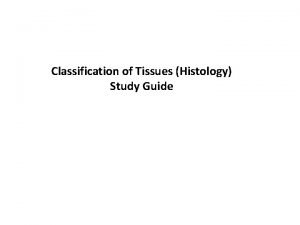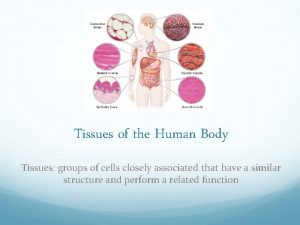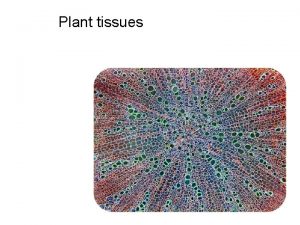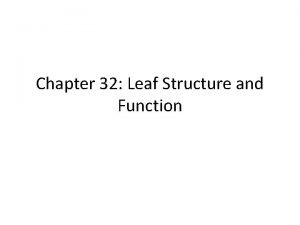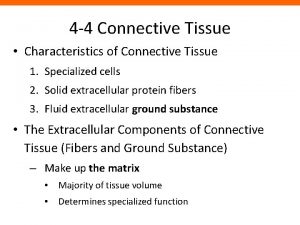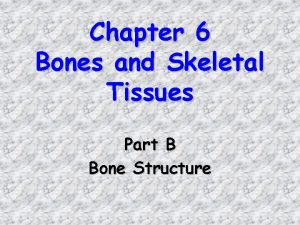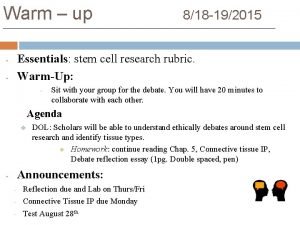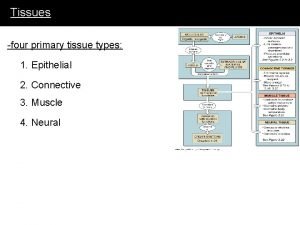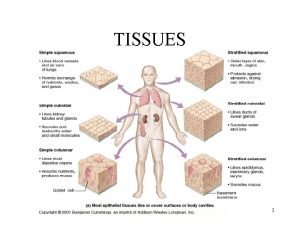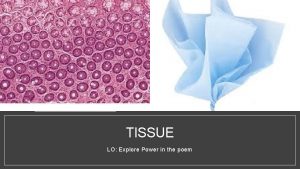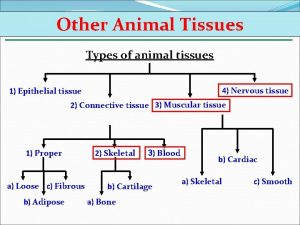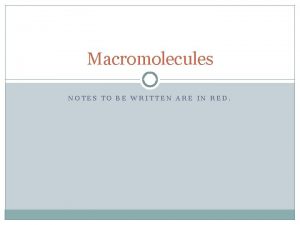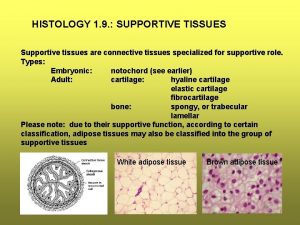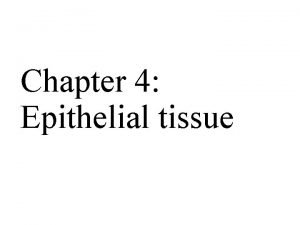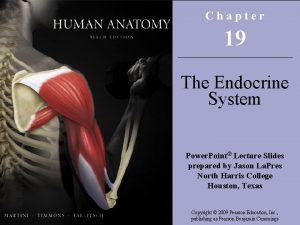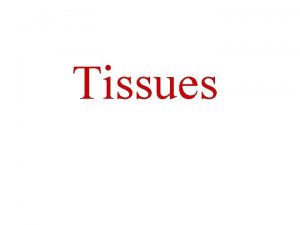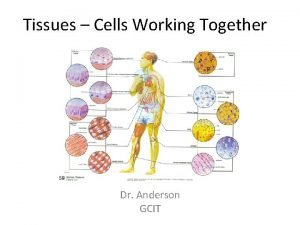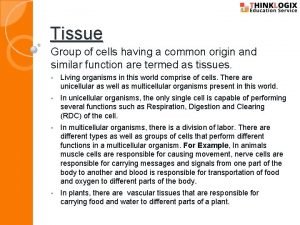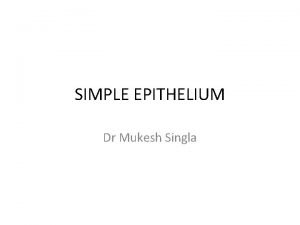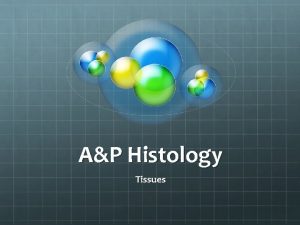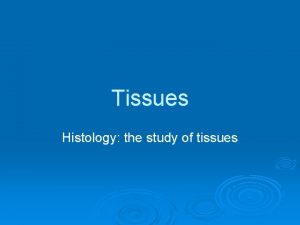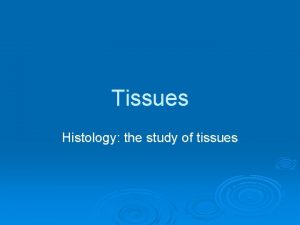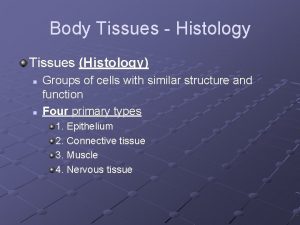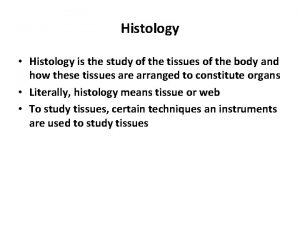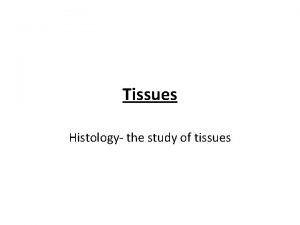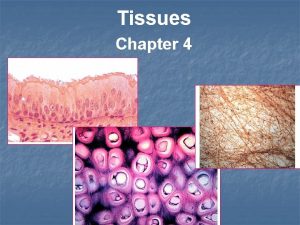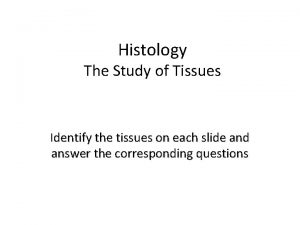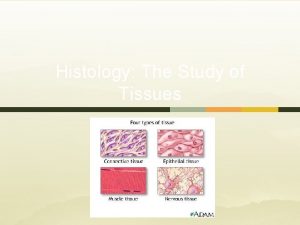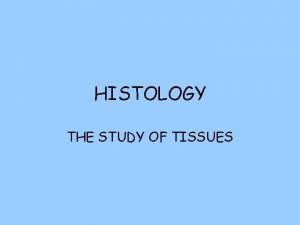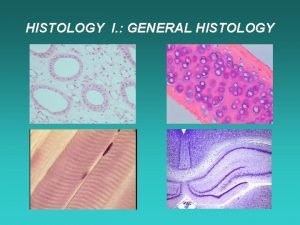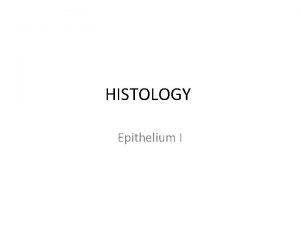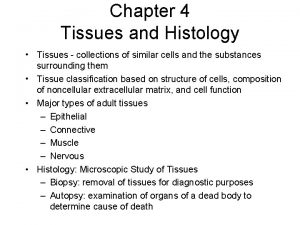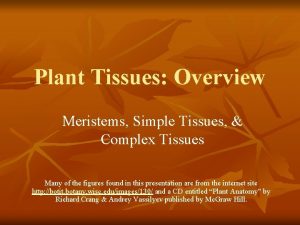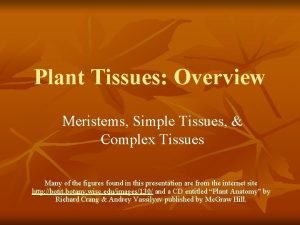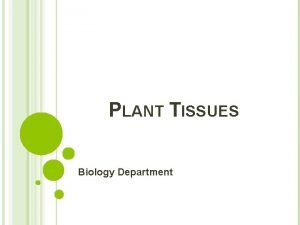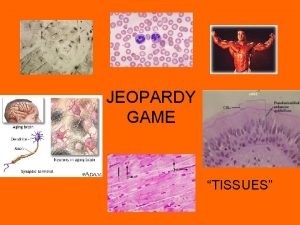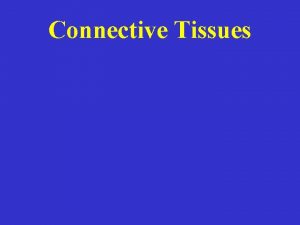Preparation of tissues for study v HISTOLOGY It












































































































- Slides: 108

Preparation of tissues for study

v HISTOLOGY : It is the branch of science which deals with the microscopic study of normal tissue v HISTOPATHOLOGY : It is the branch of science which deals with the microscopic study of tissue affected by disease Tissue for study can be obtained from: Ø Ø Biopsies Autopsies

Microtechnique • Microtechnique: is tissue preparation for microscopic examination • There are different methods used, however the basic principles are similar • It usually involves hardening of the tissue followed by sectioning (cutting) - Paraffin technique - Freezing technique

Histological Techniques: 1. Paraffin Tissues are hardened by replacing water with paraffin. The tissue is then cut in the microtome at thicknesses varying from 1 to 30 µm thick. From there the tissue can be mounted on a microscope slide, stained and examined using a light microscope.

2. Freezing technique: • Water-rich tissues are hardened by freezing and cut frozen; sections are stained and examined with a light microscope • This technique is much faster than traditional histology (20 minutes vs. 16 hours) and are used in operations to achieve a quick diagnosis • Cryosections can also be used in immunohistochemistry as freezing tissue does not alter or mask its chemical composition

Protocols followed in Histotechniques 1. 2. 3. 4. 5. 6. 7. 8. 9. 10. Receipt & Identification Labeling of the specimen with numbering Fixation Dehydration Clearing Impregnation (infiltration) Embedding Section cutting Staining Mounting

Specimen Dissection - the stage

Fixation

Fixation • This is the process by which the constituents of cells and tissue are fixed in a physical and chemical state so that they will withstand subsequent treatment with various reagents with minimum loss of architecture • This is achieved by exposing the tissue to chemical compounds: fixatives • Fixatives prevent autolysis and bacterial decomposition and preserves tissue in their natural state and fix all components

Tissue fixatives • Buffered formalin (light microscope preparation) • Buffered gluteraldehyde (electron microscope preparation) • Osmium tetraoxide (electron microscope preparation, preserve and stain) • Zenker’s formal saline • Bowen’s fluid

• No fixative will penetrate a piece of tissue thicker than 1 cm.

Cassette


Specimen is placed in porous cassettes

Labeling

Cassettes are collected in fixatives 10% formalin 1 mm/hour fixation

Processing

Tissue Processing ü In order to cut thin sections of the tissues, it should have suitable hardness and consistency when presented to the knife edge. ü These properties can be imparted by infiltrating and surrounding the tissue with paraffin wax, various types of resins or by freezing. ü This process is called tissue processing.

Tissue Processing It can be subdivided into: a) Dehydration b) Clearing c) Impregnation (infiltration)

Types of tissue processing • There are two types : 1. Manual Tissue Processing 2. Mechanical Tissue Processing

Mechanical Tissue Processing • In this the tissue is moved from one jar to another by mechanical device • Timings are controlled by a timer which can be adjusted in respect to hours and minutes • Temperature is maintained around 60 ºC • Automatic tissue processor: Ø Overnight Ø 12 Baths Ø 16 hours

Tissue basket

Tissues processor

Manual Tissue Processing • In this process the tissue is changed from one container of reagent to another by hand Note: The processing, whether manually or mechanically, involves the same steps and reagents in same sequence

Dehydration (removal of water) It is the process in which the water content in the tissue to be processed is completely removed by passing the tissue through increasing concentrations of dehydrating agents • Tissues are dehydrated by using increasing strength of alcohol; e. g. 70%, 90% and 100% • Water is replaced by diffusion

• During dehydration water in tissue has been replaced by alcohol • The next step alcohol should be replaced by paraffin wax • As paraffin wax is not alcohol soluble, we replace alcohol with a substance in which wax is soluble. This step is called clearing.

Clearing • Replacing the dehydrating fluid with a fluid that is totally miscible with both the dehydrating fluid and the embedding medium • Some clearing agents: - Xylene - Toluene - Chloroform - Benzene

Impregnation (infiltration): Ø In this the tissue is kept in a wax bath containing molten paraffin wax

The duration of the procedure can be noted down as: Fixation 1. 2. 10 % Formalin saline (I) 10 % Formalin saline (II) for 1. 5 hours Dehydration 1. 2. 3. 4. 5. 6. 80 % alcohol 95 % alcohol (I) 95 % alcohol (II) Absolute alcohol (100%) (III) for for for 1 hour 1 hour

Clearing: 1. 2. Xylene (I) Xylene (II) for 1. 5 hours Infiltration: 1. 2. Paraffin wax (I) Paraffin wax (II) for 1. 5 hours

Embedding

Embedding: g is the process by which impregnated tissues are surrounded by a medium such as agar, gelatin, or wax which when solidified will provide sufficient external support during sectioning

Embedding: Ø It is done by transferring the tissue to a mould filled with molten wax & is allowed to cool & solidify Ø After solidification, a wax block is obtained which is then sectioned to obtain ribbons

Embedding tools Moulds Paraffin wax

Metal moulds

Disposable plastic moulds

Embedding tools Paraffin wax: is a polycrystalline mixture of solid hydrocarbons. Paraffin wax is traditionally marketed by its melting points which range from 39°C to 68°C

Embedding tools Scalpel (blade) Forceps

Embedding Centre

Embedding Centre Used lids Molten wax (60°C) (reservoir) Heated chambers Wax flow adjuster Mould Hot surface Cold plates (5°C) Cassette Wax dispenser

General Embedding Procedure

Fill the mould with paraffin wax

Using warm forceps select the tissue, take care that it does not cool in the air

Orienting the tissue in the mould

Orientation Of Tissue In The Block ü Correct orientation of tissue in a mould is the most important step in embedding 1. cross section 2. longitudinal section ü Incorrect placement of tissues may result in diagnostically important tissue elements being missed or damaged during microtomy

Cool the block on the cold plate

Blocks on the cold plate

Remove the block from the mould



Blocks of embedded tissue are usually trimmed to remove the excess wax on the surface

Sectioning

Sectioning (Section Cutting) Ø It is the procedure in which the blocks which have been prepared are cut or sectioned and thin strips of uniform thickness are prepared Ø The instrument by which this is done is called as a Microtome

TYPES OF MICROTOMES: • Rotary microtome • Freezing (cryostat) microtome • Ultramicrotome

Microtome knives • • • Steel Knives Non-corrosive Knives For Cryostats Disposable Blades Glass Knives Diamond Knives • Microtome blades are extremely sharp, and should be handled with great care. Safety precautions should be taken in order to avoid any contact with the cutting edge of the blade

Steel Knives (for rotary microtome)

Disposable Blades

Glass Knives (for ultramicrotome)

Rotary Microtome Block holder Knife holder Drive wheel

Micron adjustment (section thickness) 1 -30µm Paraffin Block Steel knife

Rotary Microtome The knife is stationary (fixed) and the block holder is moved up and down in a vertical plane by the rotary action of the hand wheel Ø It is the most commonly used Ø Suitable for paraffin embedded sections Ø It is suitable for cutting of small tissues Ø Ideal for cutting serial sections

Ultra Microtome

Ultra Microtome ü Used for very thin section ü The typical thickness of tissue cut is between 20 -100 nm for TEM ü Knife: Diamond or Glass

Ultra Microtome

Ultra Microtome

Freezing (Cryostat) microtome • Frozen tissue embedded in a freezing medium is cut on a microtome in a cooled machine called a cryostat

Freezing (Cryostat) microtome

Freezing (Cryostat) microtome

Sectioning procedure

Ribbon of sections


Tissue floatation bath § It is a thermostatically controlled water bath • It is maintained at a temperature 5 – 6 degrees below the melting point of paraffin wax

Flattened paraffin sections

Taking the floating sections onto slide Adhesives used for fixing the sections on the slides Albumin solution ( Mayor’s egg albumin)

Taking the section onto slide Flat, no air bubbles, no stretch or breaks

Staining

Staining • Staining is a process by which we give colour to a section. Staining of the section is done to bring out the particular details in the tissue under study • There are hundreds of stains available • The most commonly used stain in routine practice is Hematoxylin & Eosin stain

Staining • Classification of Stains: • Acid stains • Basic stains • Staining steps: a. rehydration b. stain c. dehydration

Acid Dyes In an acidic dye: • The basic component is colored and the acid component is colorless • Acid dyes stain basic components e. g. eosin stains cytoplasm • The color imparted is shade of red

Basic Dyes In a basic dye: • The acid component is colored and the basic component is colorless • Basic dyes stain acidic components e. g. Hematoxylin stains nucleus • The color imparted is shade of blue

H & E stains are universally used for routine histological examination of tissue sections

• Result : The nucleus stains Blue The cytoplasm stains pink

Special stains • When a specific component of tissue e. g. fibrous tissue, elastic tissue, nuclear material is to be stained, certain special stains are used which specifically stain that component tissue Examples: 1. PAS 2. Masson’s trichrome 3. Silver

Normal glomerulus of kidney is stained with H&E

Normal glomerulus of kidney is stained with PAS detects glycogen, glycoproteins, glycolipids and mucins in tissues

Masson Trichrome Stain § Nuclei stain black or blue-black • Muscles stain red • Collagen and mucus stain green or blue • Cytoplasm of most cells stains pink Normal glomerulus of kidney is stained with Masson_trichrome

Normal glomerulus of kidney is stained with methenamine silver Silver stains reticular fibers (type III collagen)

Staining Tools

Slide rack


Slide rack

Solutions

Procedure of staining: • There are two types of staining: • Manual Staining • Automatic staining • Slides stained either manually or by automatic stainer, pass through same sequences of reagents.

Manual Staining • Different reagent containers are placed in a special sequence and the slides are removed from one container to another manually.

Manual Staining

Manual Staining

Automatic stainer

Automatic stainer

Haematoxylin Eosin Dehydration (alcohol) Hydration (alcohol) Deparaffinization (xylene) Clearing (xylene)

Mounting • Stained section on microscope slide is mounted using mounting medium dissolved in xylene • Examples of Mountants : DPX ( Distrene Dibutyl phthalate Xylene ) ü A coverslip is placed on top, to protect the sample





Light Microscopic Examination

Microscopic Examination

Concering Electron Microscopy u Electron beam instead of light u Gluteraldehyde fixative u Embedding is in hard epoxy plastic u Ultramicrotome • Diamond or Glass knives • Thin section (0. 02 -0. 1 µm). u Specimen is mounted on a metal grid

Ultra Microtome
 Body tissue
Body tissue Body tissue
Body tissue Body tissues chapter 3 cells and tissues
Body tissues chapter 3 cells and tissues Eisonophil
Eisonophil Chapter 3 cells and tissues
Chapter 3 cells and tissues Simple cuboidal epithelium labeled
Simple cuboidal epithelium labeled Kontinuitetshantering i praktiken
Kontinuitetshantering i praktiken Typiska novell drag
Typiska novell drag Nationell inriktning för artificiell intelligens
Nationell inriktning för artificiell intelligens Vad står k.r.å.k.a.n för
Vad står k.r.å.k.a.n för Shingelfrisyren
Shingelfrisyren En lathund för arbete med kontinuitetshantering
En lathund för arbete med kontinuitetshantering Personalliggare bygg undantag
Personalliggare bygg undantag Tidbok för yrkesförare
Tidbok för yrkesförare A gastrica
A gastrica Vad är densitet
Vad är densitet Datorkunskap för nybörjare
Datorkunskap för nybörjare Tack för att ni lyssnade bild
Tack för att ni lyssnade bild Debattinlägg mall
Debattinlägg mall Autokratiskt ledarskap
Autokratiskt ledarskap Nyckelkompetenser för livslångt lärande
Nyckelkompetenser för livslångt lärande Påbyggnader för flakfordon
Påbyggnader för flakfordon Kraft per area
Kraft per area Svenskt ramverk för digital samverkan
Svenskt ramverk för digital samverkan Urban torhamn
Urban torhamn Presentera för publik crossboss
Presentera för publik crossboss Teckenspråk minoritetsspråk argument
Teckenspråk minoritetsspråk argument Vem räknas som jude
Vem räknas som jude Klassificeringsstruktur för kommunala verksamheter
Klassificeringsstruktur för kommunala verksamheter Mjälthilus
Mjälthilus Bästa kameran för astrofoto
Bästa kameran för astrofoto Cks
Cks Programskede byggprocessen
Programskede byggprocessen Bra mat för unga idrottare
Bra mat för unga idrottare Verktyg för automatisering av utbetalningar
Verktyg för automatisering av utbetalningar Rutin för avvikelsehantering
Rutin för avvikelsehantering Smärtskolan kunskap för livet
Smärtskolan kunskap för livet Ministerstyre för och nackdelar
Ministerstyre för och nackdelar Tack för att ni har lyssnat
Tack för att ni har lyssnat Hur ser ett referat ut
Hur ser ett referat ut Redogör för vad psykologi är
Redogör för vad psykologi är Stål för stötfångarsystem
Stål för stötfångarsystem Atmosfr
Atmosfr Borra hål för knoppar
Borra hål för knoppar Orubbliga rättigheter
Orubbliga rättigheter Varians formel
Varians formel Tack för att ni har lyssnat
Tack för att ni har lyssnat Rita perspektiv
Rita perspektiv Informationskartläggning
Informationskartläggning Tobinskatten för och nackdelar
Tobinskatten för och nackdelar Toppslätskivling dos
Toppslätskivling dos Mästar lärling modellen
Mästar lärling modellen Egg för emanuel
Egg för emanuel Elektronik för barn
Elektronik för barn Antika plagg
Antika plagg Strategi för svensk viltförvaltning
Strategi för svensk viltförvaltning Kung som dog 1611
Kung som dog 1611 Humanitr
Humanitr Sju för caesar
Sju för caesar Tack för att ni lyssnade
Tack för att ni lyssnade Mindre än tecken
Mindre än tecken Fri form dikt
Fri form dikt Inköpsprocessen steg för steg
Inköpsprocessen steg för steg Rbk fuktmätning
Rbk fuktmätning Etik och ledarskap etisk kod för chefer
Etik och ledarskap etisk kod för chefer Hur stor skarns är det för ett barn att få cancer
Hur stor skarns är det för ett barn att få cancer Myndigheten för delaktighet
Myndigheten för delaktighet Trög för kemist
Trög för kemist Sju principer för tillitsbaserad styrning
Sju principer för tillitsbaserad styrning Läkarutlåtande för livränta
Läkarutlåtande för livränta Start för skala
Start för skala Skapa med geometriska former
Skapa med geometriska former Vishnuismen
Vishnuismen Vad är vanlig celldelning
Vad är vanlig celldelning Bris för vuxna
Bris för vuxna Bamse för de yngsta
Bamse för de yngsta Connective tissue
Connective tissue Function of elastic connective tissue
Function of elastic connective tissue Meristematic tissue flow chart
Meristematic tissue flow chart 3 tissues of a plant
3 tissues of a plant Stone cells in plants
Stone cells in plants Jane campion tissues
Jane campion tissues Upper vs lower epidermis
Upper vs lower epidermis Tissues causes of civil war
Tissues causes of civil war Muscle tissue where is it found
Muscle tissue where is it found Dense connective
Dense connective Tissues are groups of similar cells working together to
Tissues are groups of similar cells working together to Genetic effects on gene expression across human tissues
Genetic effects on gene expression across human tissues Fibrocartilage description
Fibrocartilage description Chapter 6 bones and skeletal tissues
Chapter 6 bones and skeletal tissues Types of tissues
Types of tissues Four primary tissues
Four primary tissues Tissues are groups of similar cells working together to
Tissues are groups of similar cells working together to Poem about tissues
Poem about tissues Types of tissues
Types of tissues What macromolecule is a prominent part of animal tissues
What macromolecule is a prominent part of animal tissues Division of anatomy
Division of anatomy Supportive tissues
Supportive tissues What is this tissue
What is this tissue Q
Q Types of tissues
Types of tissues Which part of the cell contains genetic material
Which part of the cell contains genetic material Cell membrane phospholipids
Cell membrane phospholipids Pearson endocrine system
Pearson endocrine system What are the four major tissue types
What are the four major tissue types Tissues working together
Tissues working together Tissue is a group of cells having
Tissue is a group of cells having Cardiorespiratory system includes
Cardiorespiratory system includes Epithelial tissue
Epithelial tissue





